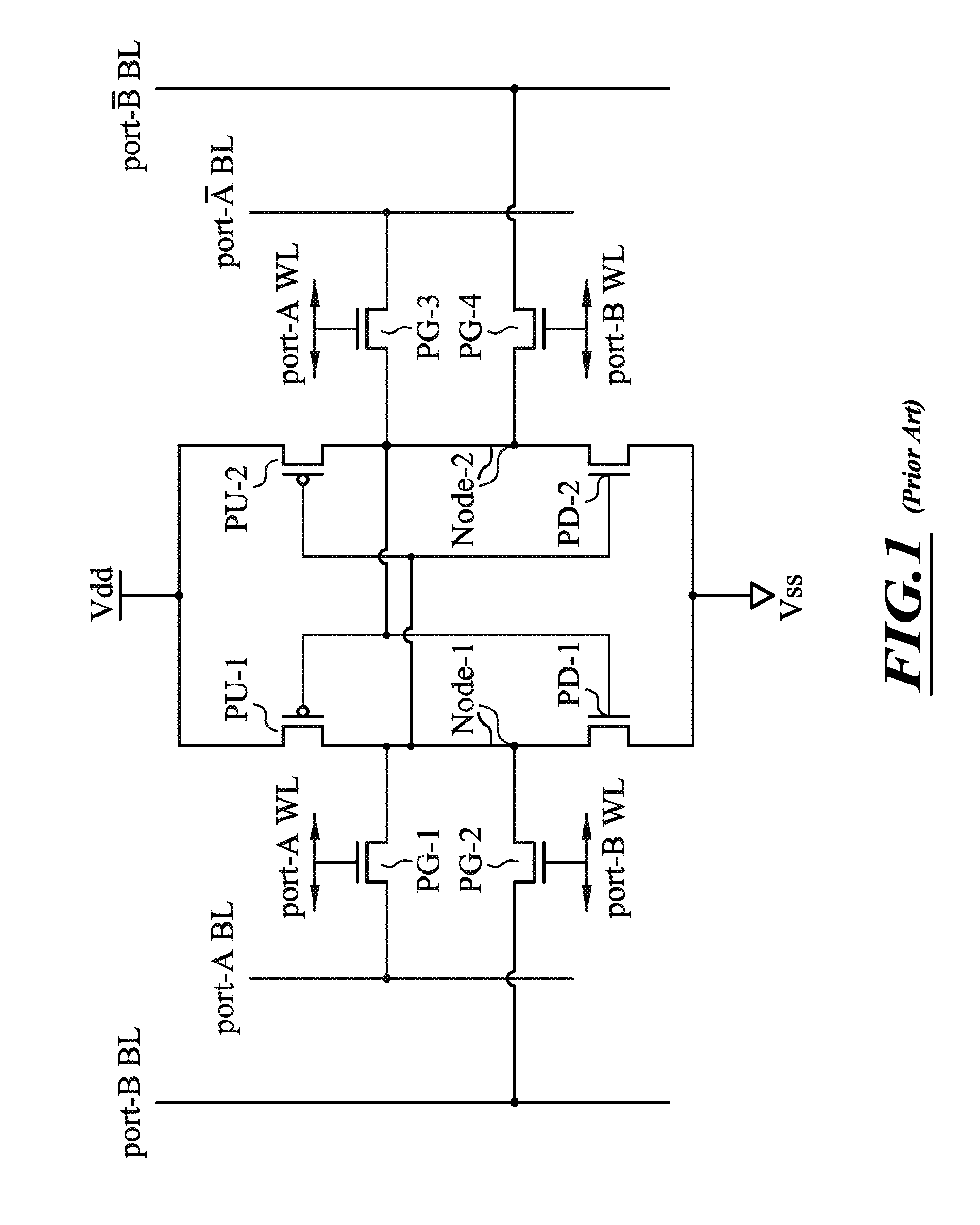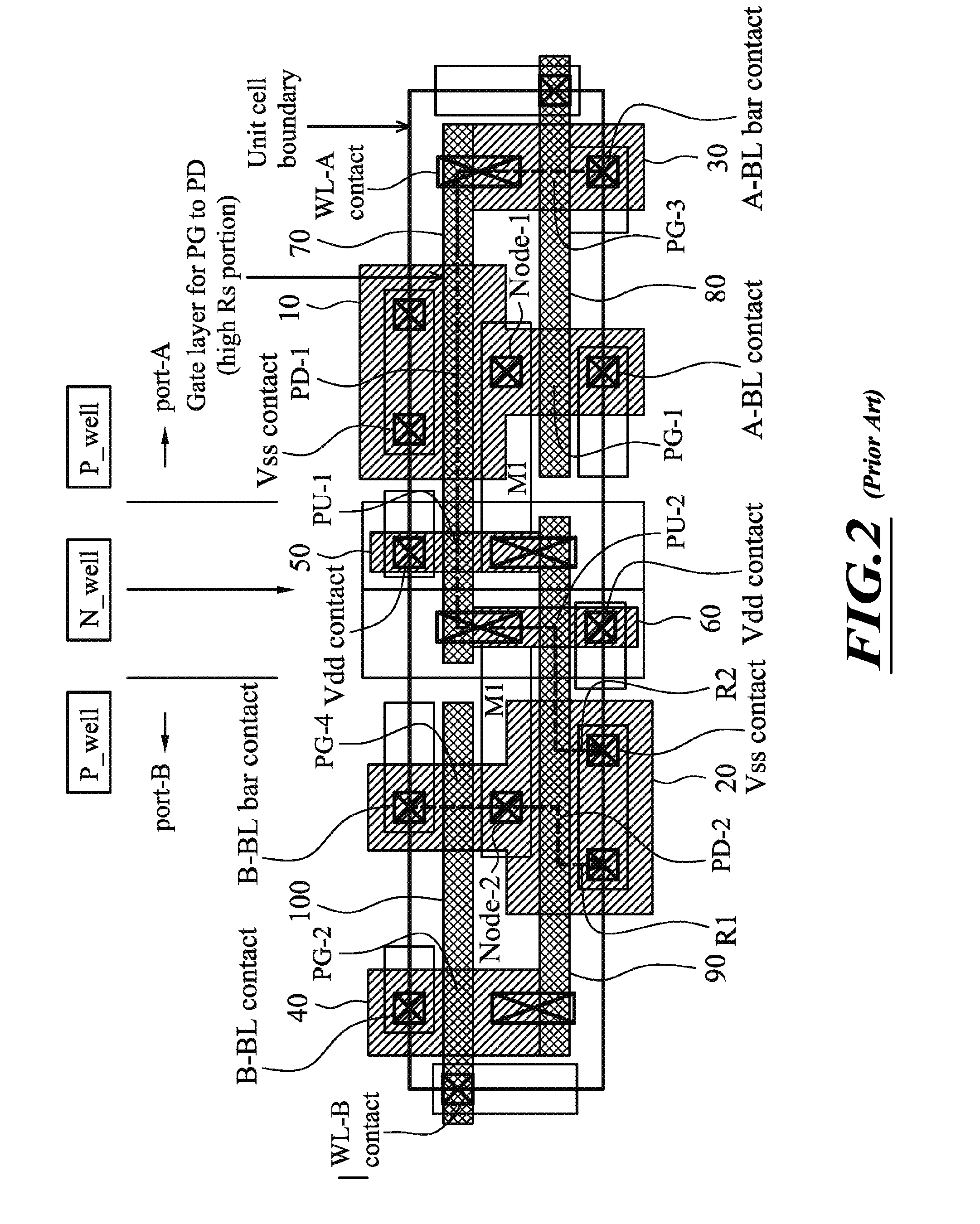Dual port SRAM having reduced cell size and rectangular shape
a sram and cell technology, applied in the field of dual port srams, can solve the problems of degrading cell performance, memory cell creating additional problems, high wordline rc time constant, etc., and achieve the effect of improving performance, high performance and performing the function
- Summary
- Abstract
- Description
- Claims
- Application Information
AI Technical Summary
Benefits of technology
Problems solved by technology
Method used
Image
Examples
Embodiment Construction
[0042]A new layout is provided for a dual port memory cell as illustrated in FIGS. 6-13, an alternative embodiment of which is shown in FIGS. 14 and 15.
[0043]The figures as shown herein are generally to scale with respect to the specific layouts. Namely, the features as shown in the layouts of FIGS. 7-15 are examples that represent the actual relative dimensions of the structures in one embodiment and show the feature sizes relative to each other. Some variation may exist between the different features as shown in these embodiments and their sizes relative to each other, and still fall within use of the present invention since the scope of the invention is defined by the claims and not by the figures or the specification. Namely, the location and general shape of the structures as shown herein constitutes a novel layout with advantageous and unexpected properties. A layout of the type shown herein may have many different sizes of components in different sizes relative to each other ...
PUM
 Login to View More
Login to View More Abstract
Description
Claims
Application Information
 Login to View More
Login to View More - R&D
- Intellectual Property
- Life Sciences
- Materials
- Tech Scout
- Unparalleled Data Quality
- Higher Quality Content
- 60% Fewer Hallucinations
Browse by: Latest US Patents, China's latest patents, Technical Efficacy Thesaurus, Application Domain, Technology Topic, Popular Technical Reports.
© 2025 PatSnap. All rights reserved.Legal|Privacy policy|Modern Slavery Act Transparency Statement|Sitemap|About US| Contact US: help@patsnap.com



